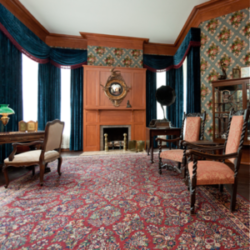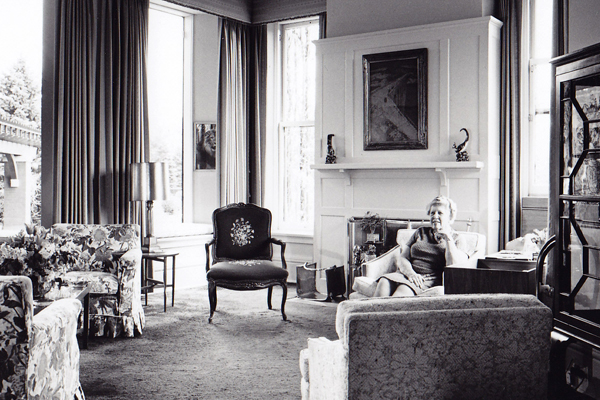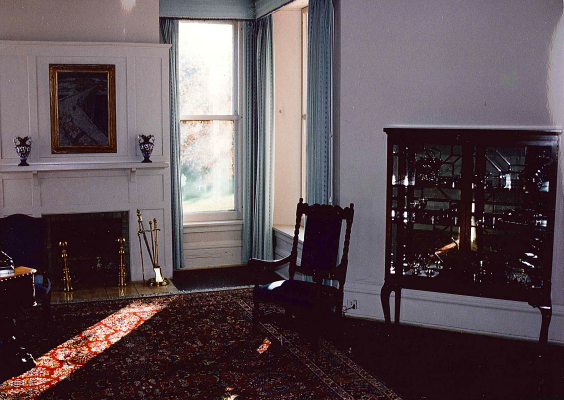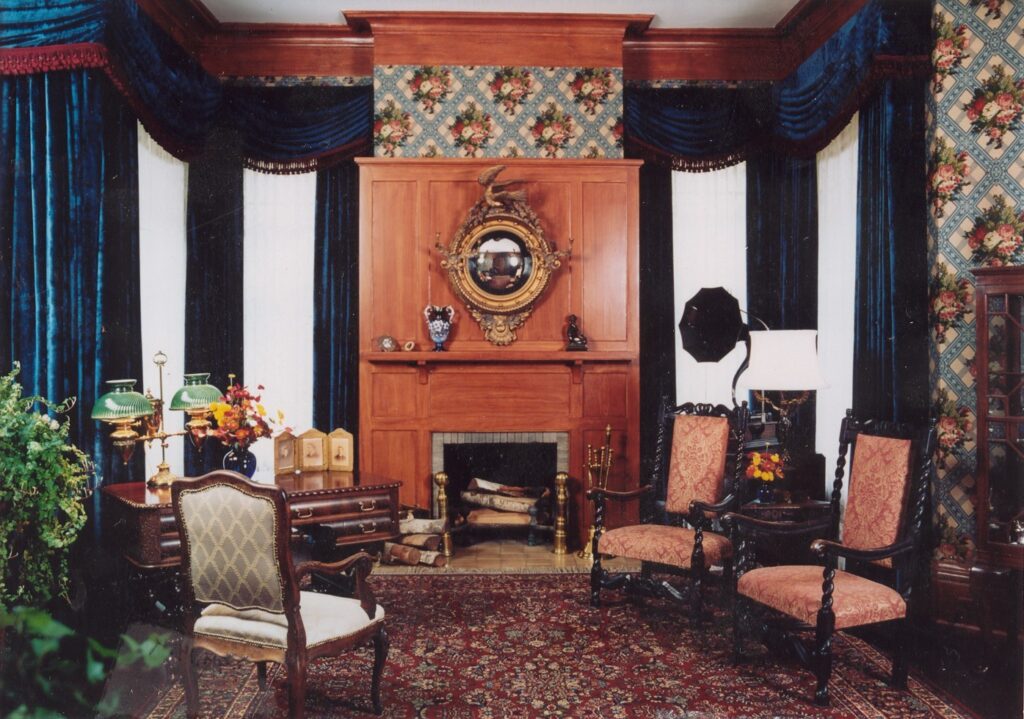The Study was restored to its 1910 appearance in 1997. Restoration of the Sitting Room/Study included furniture conservation and reproduction, installation of new window treatments, and faux painting of several surfaces.

The room was first stripped bare as the wood and plaster surfaces were prepared. The canvas on the wall, ripped and bulging in some places, was removed from the walls and ceiling.
Professional faux painter Cindi Upton of Davenport painted the wood baseboard, door and window surrounds, pocket doors, side door, and fireplace to look like dark cherry wood. The project was not completed until 1997 after locating and installing the appropriate wallpaper.
All of the changes made to the Study were based on the furnishing plan adopted by the Brucemore Board of Trustees and approved by the National Trust‘s curatorial staff.
A Closer Look

This photograph of the Great Hall in the early 1920s provided clues to the appearance of the Douglas era Study. A sliver of wallpaper visible on the left through the door to the Study inspired the wallpaper selection for the restoration project.

The Halls transformed this space into a comfortable area where Margaret could entertain guests. (Photo c. 1940)

Margaret sat for this photograph in the Study in 1978.

In this early 1980s photograph, pieces of furniture and art still on display are visible. The end tables and lamps are still found in the Study, while the Marvin Cone painting Thunderhead is now on display in the Hall Perrine Conference Room.

Restoration began in the early 1990s with the addition of the Persian rug and the relocation of furniture to the Study based off of oral histories from family members. These same oral histories guided the color scheme.

The Study now appears much as it did in the early 1900s. Victorian tastes are reflected in the floral wallcloth, heavy velvet drapes, and Persian rug.